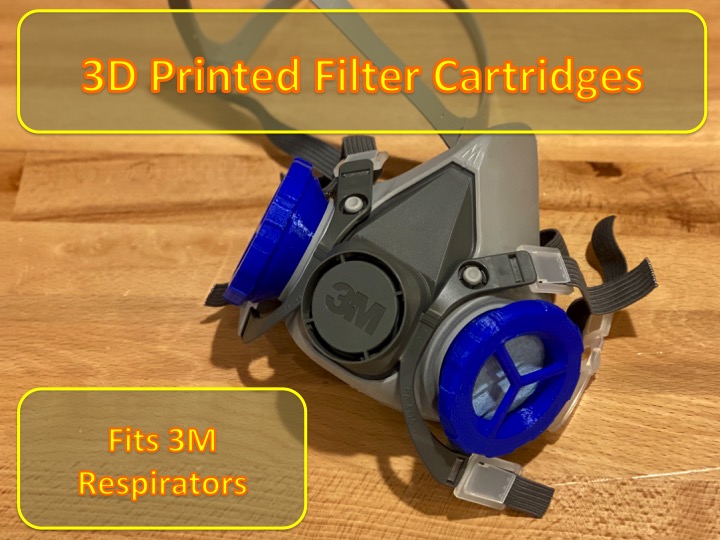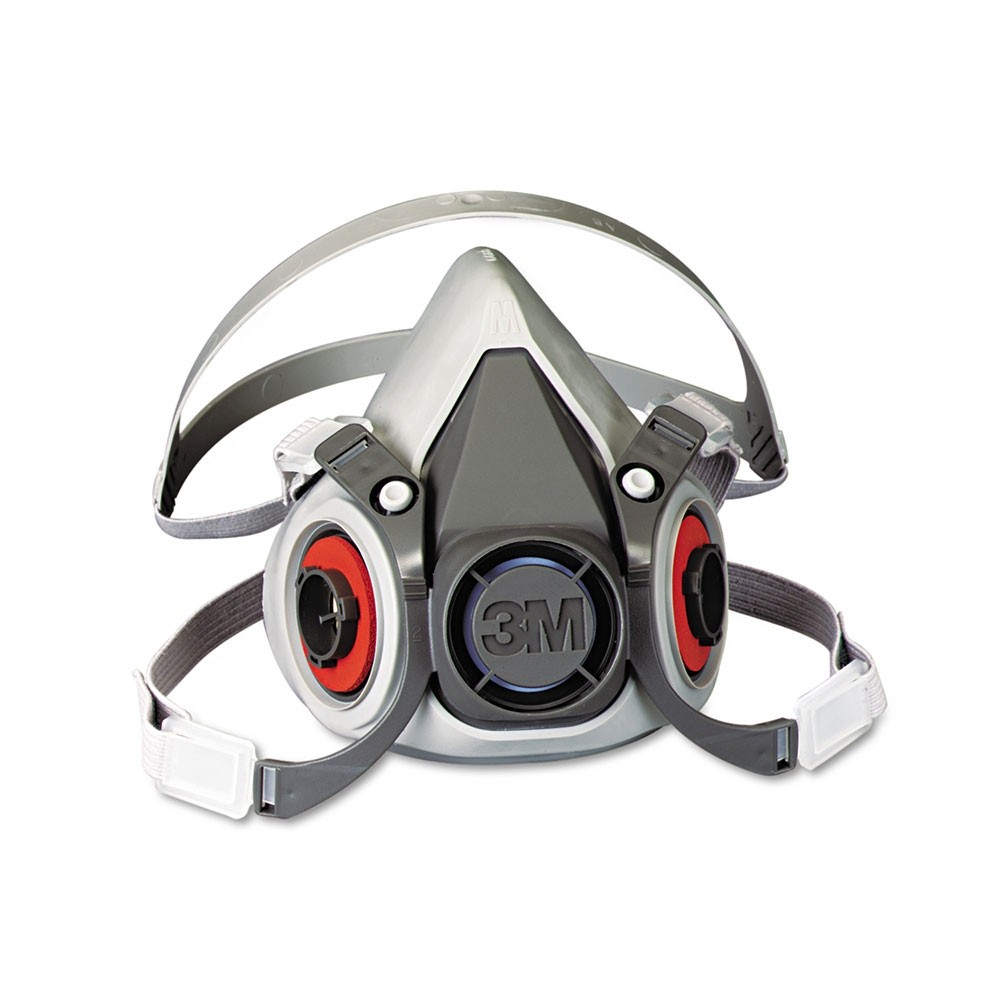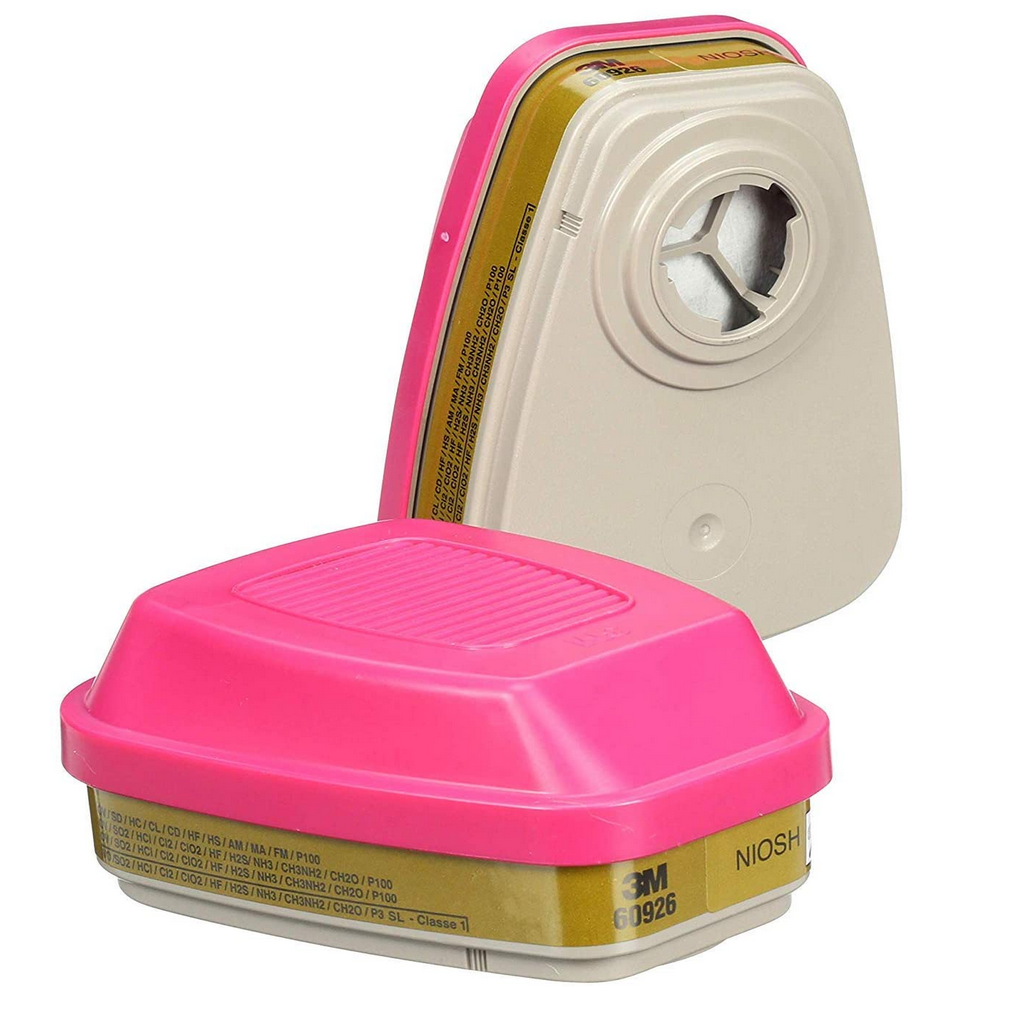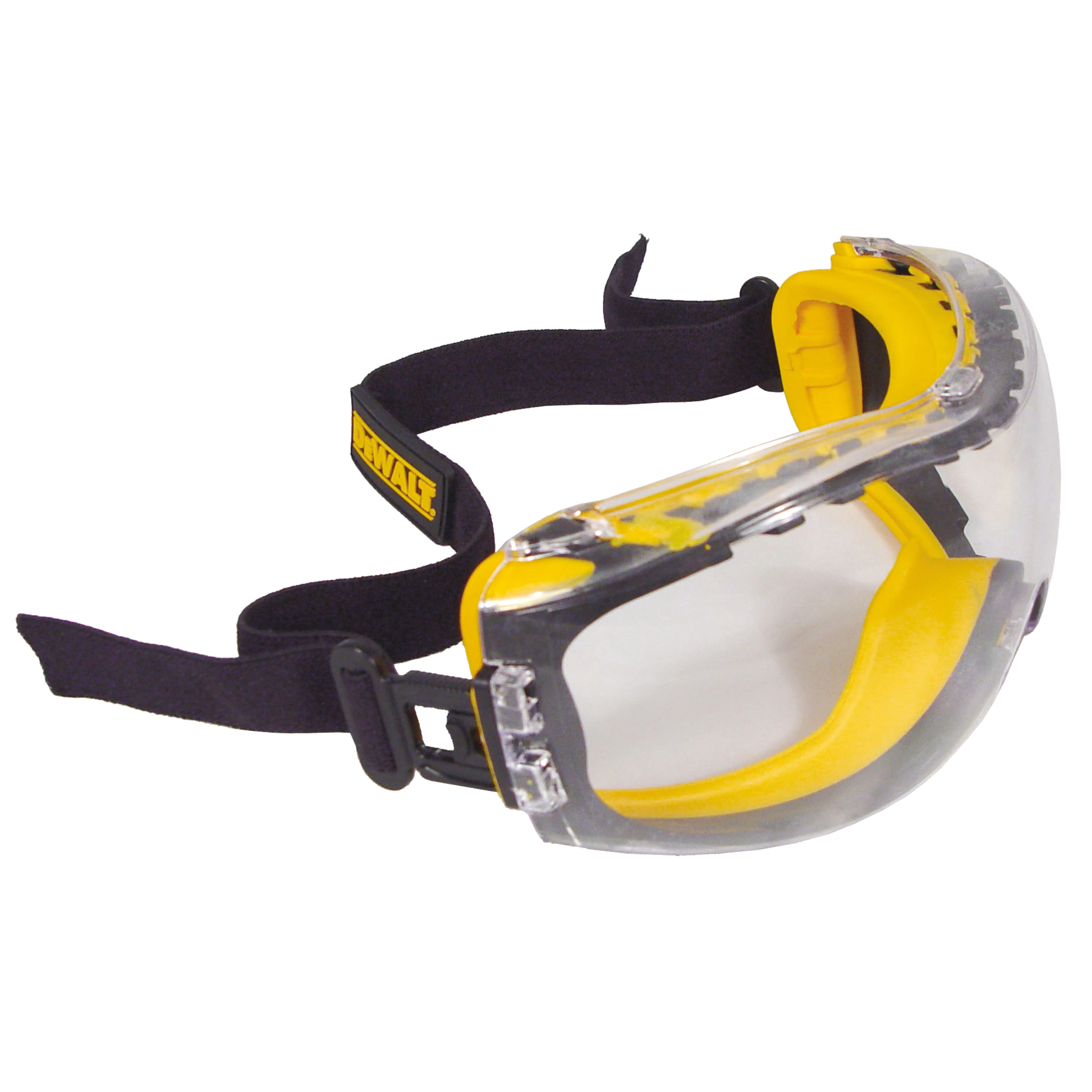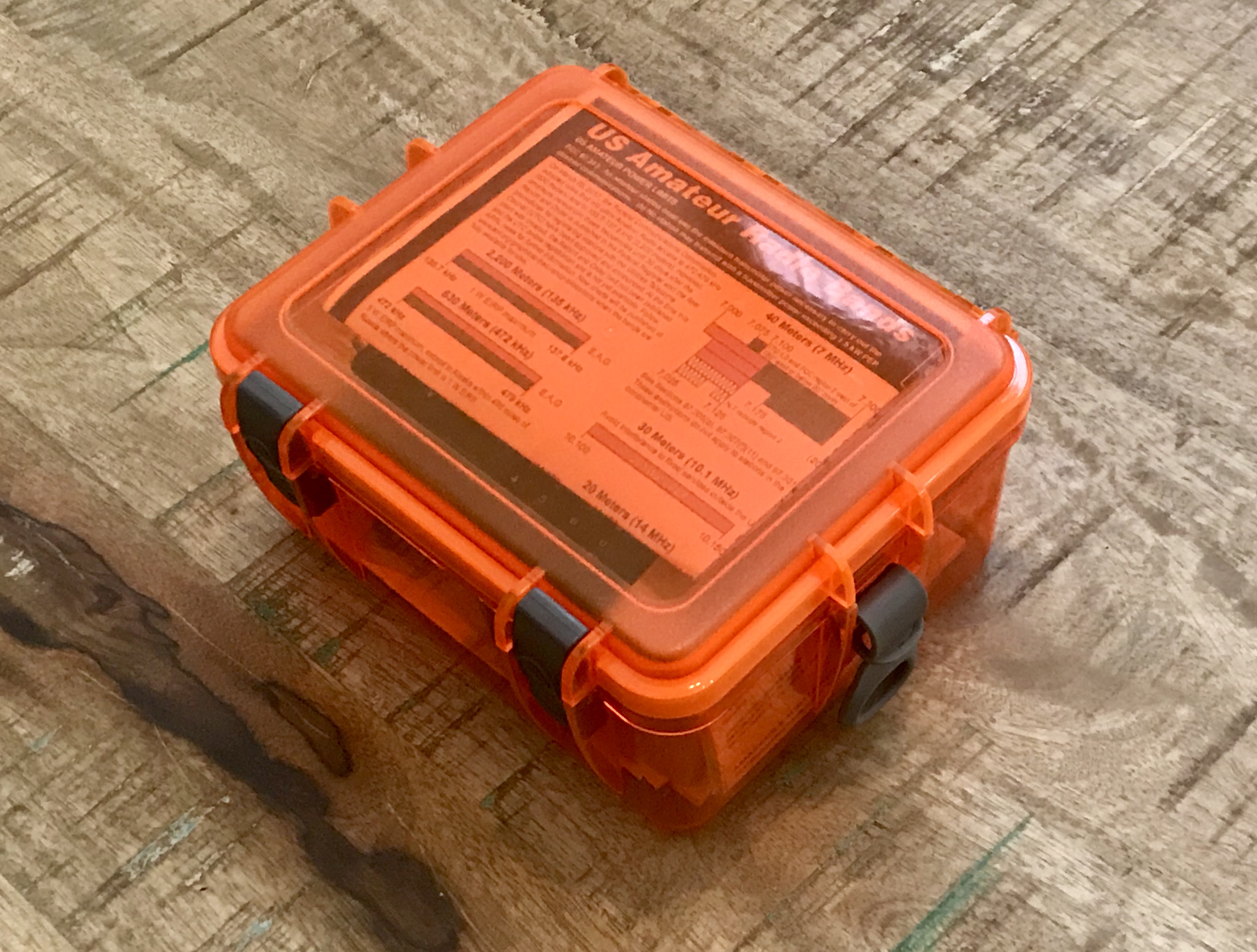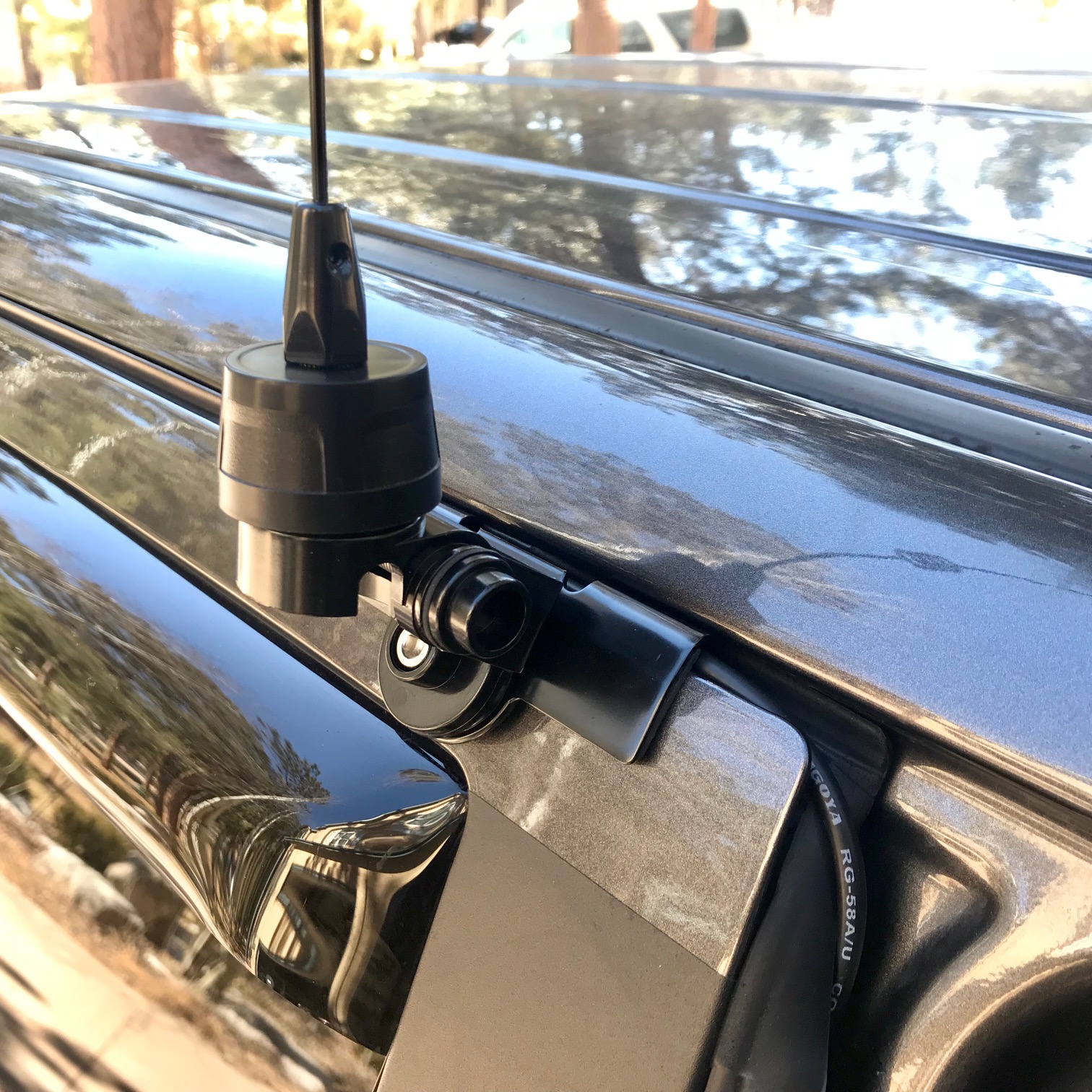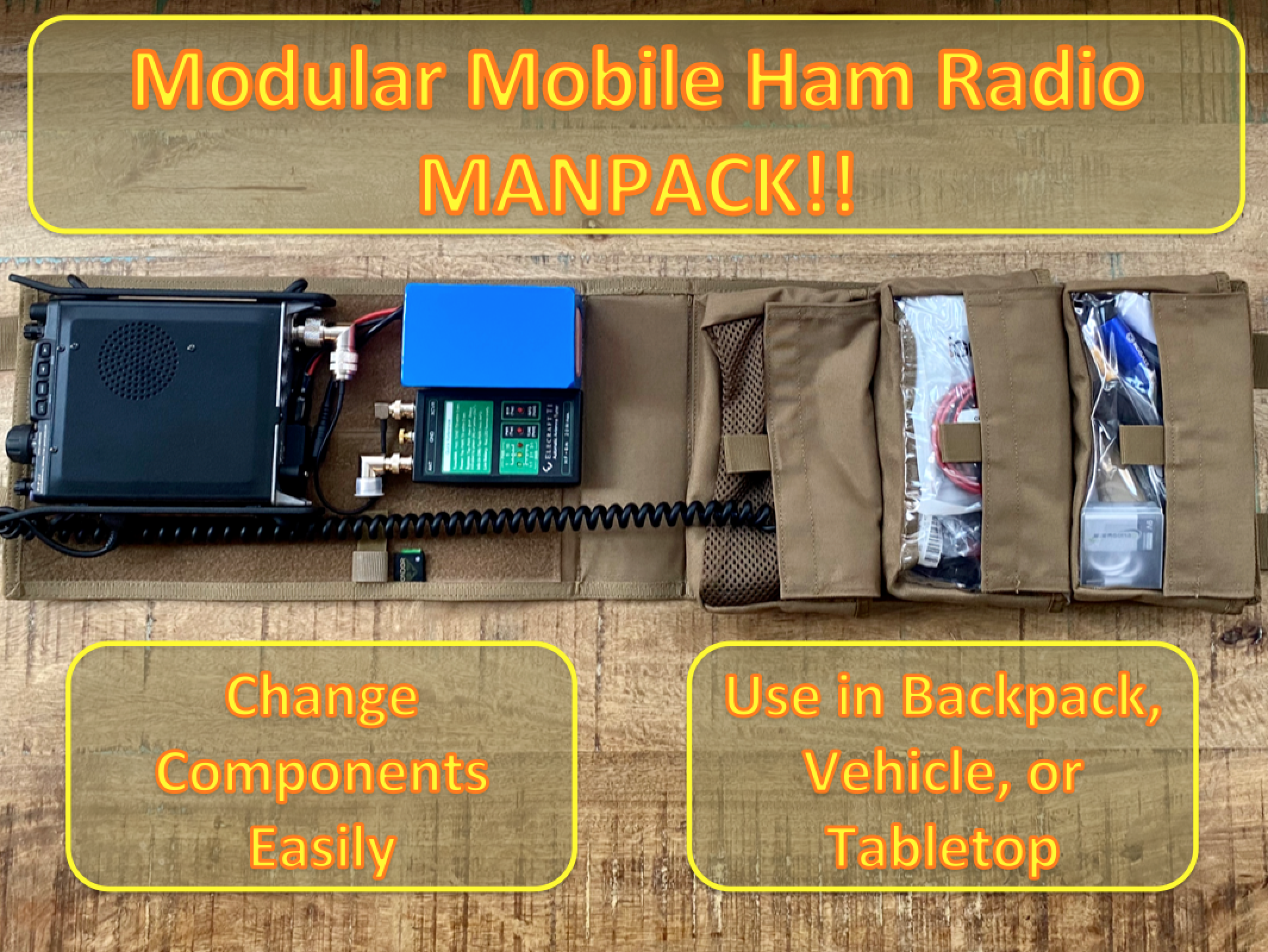3D Printed Facemask Filter Cartridge for Aerosol Droplet Protection
The Centers for Disease Control (CDC) and many government organizations currently recommend wearing homemade cloth facemasks to limit the spread of coronavirus. (Technically, SARS-CoV-2 is the virus that causes COVID-19, the coronavirus disease of 2019.) This is based on 1) the desire to leave N95 masks available to the medical community who are in frequent direct exposure to SARS-CoV-2, and 2) the assessment that a significant amount of transmission can be limited by preventing people who have the virus from emitting droplets into the air. The fabric masks are intended to prevent you (who may be an asymptomatic carrier) from infecting others, not to protect yourself from becoming infected. (Many examples of peer-reviewed research on the efficacy of homemade masks exist, such as Davies, et. al., in Disaster Medicine and Public Health Preparedness.)
If you're looking for a way to increase protection for yourself without affecting the supply of N95 masks for medical personnel, there are options. These options are not likely to be as protective as lab-tested, NIOSH-certified medical products--but they are readily available, unlike certified Personal Protective Equipment in a pandemic. Testing in an uncertified lab (which is effectively anecdotal evidence) suggests that "using blue shop towels in homemade face masks can filter particles 2x to 3x better than cotton." Suay Sew Shop found that "inserting two of these towels into an ordinary cotton mask brought filtration up to 93% of particles as small as 0.3 microns," which is the standard particle size for NIOSH-certified N95/N99/N100 masks. (alternate link)
According to the U.S. Food and Drug Adminstration (FDA), "The 'N95' designation means that when subjected to careful testing, the respirator blocks at least 95 percent of very small (0.3 micron) test particles." N99 masks filter 99% of .3 micron or larger particles, and N100 filters 99.97%. The "P" designation, as in P95 or P100 filters, means the filter is oil-proof; "R" means it's oil resistant. (link)
So I found some free downloadable Filter Casette for 3M Gas Mask plans hosted on Cults and asked a friend to print several sets. These plans produce a "3-pieced filter cassette for the 3M respirator. Each cassette is sized for 1/6 surgical mask (standard adult size) or any filter membrane air-tighted by well designed screw. Splash-proof cover is also available upon exchange. This cassette can save masks at this critical moment."
| 3D Printed Filter Cartridge for 3M Respirators |
This project consists of:
- 3M resipirator. I used a Series 6100 half face mask respirator that I bought years ago. Any respirator with the tri-blade attachment will work. According to the previous link, these respirators are "NIOSH approved for negative-pressure air purifying and positive-pressure dual airline applications" when used with appropriate filters. This project is for when those filters are not available.
- The 3D printed filter cartridge, consisting of an inner ring that connects to the mask, an insert ring that holds the filter material in place, and an outer ring that screws onto the inner ring to secure the insert and filter material.
- Filter material. For protecting against aerosol droplets, a layer or two of any absorbent fabric is sufficient. (The CDC recommends 100% cotton for facemasks, but that information may be incomplete based on other suitable materials not being tested.) As discussed above, however, blue shop towels may provide additional protection.
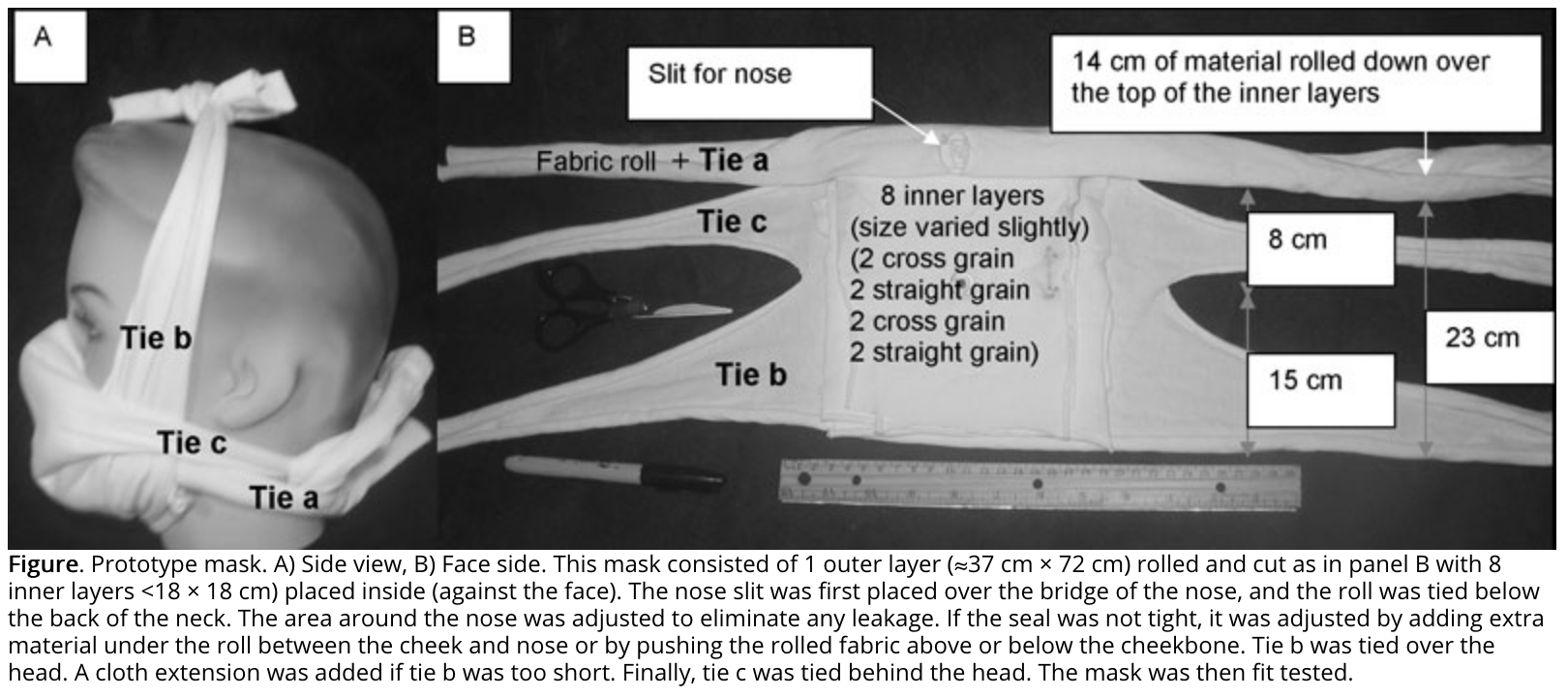
(Source: CDC)
Important Note. Surface area of the filter membrane affects the ease of breathing through the cartridge. I started by putting a single layer of blue shop towel over the cartridge, and it was difficult to breath through. Next, I put three pleats in the towel (seen in Pic 1), put it on the inner ring and inserted the ring insert, and trimmed off the excess. That was easier, but still difficult.
Pic 1 also shows what the shop towel looks like after it has been pleated and trimmed, then removed from the cartridge.
Pic 4 shows the best solution I found. I wrapped the towel around my finger and poked it through the inner ring, then secured it with the insert and trimmed off the excess, then screwed on the outer ring. Then I pushed towel back inside the cartridge and screwed it onto the mask. This provided the most surface area and was the easiest to breathe through.
It's important to note that harder breathing (more resistance) does not equate to better protection. In both cases, the protection consists of one layer (or two, if you choose) of shop towel, regardless of air resistance. More surface area equals more protective area and easier breathing.
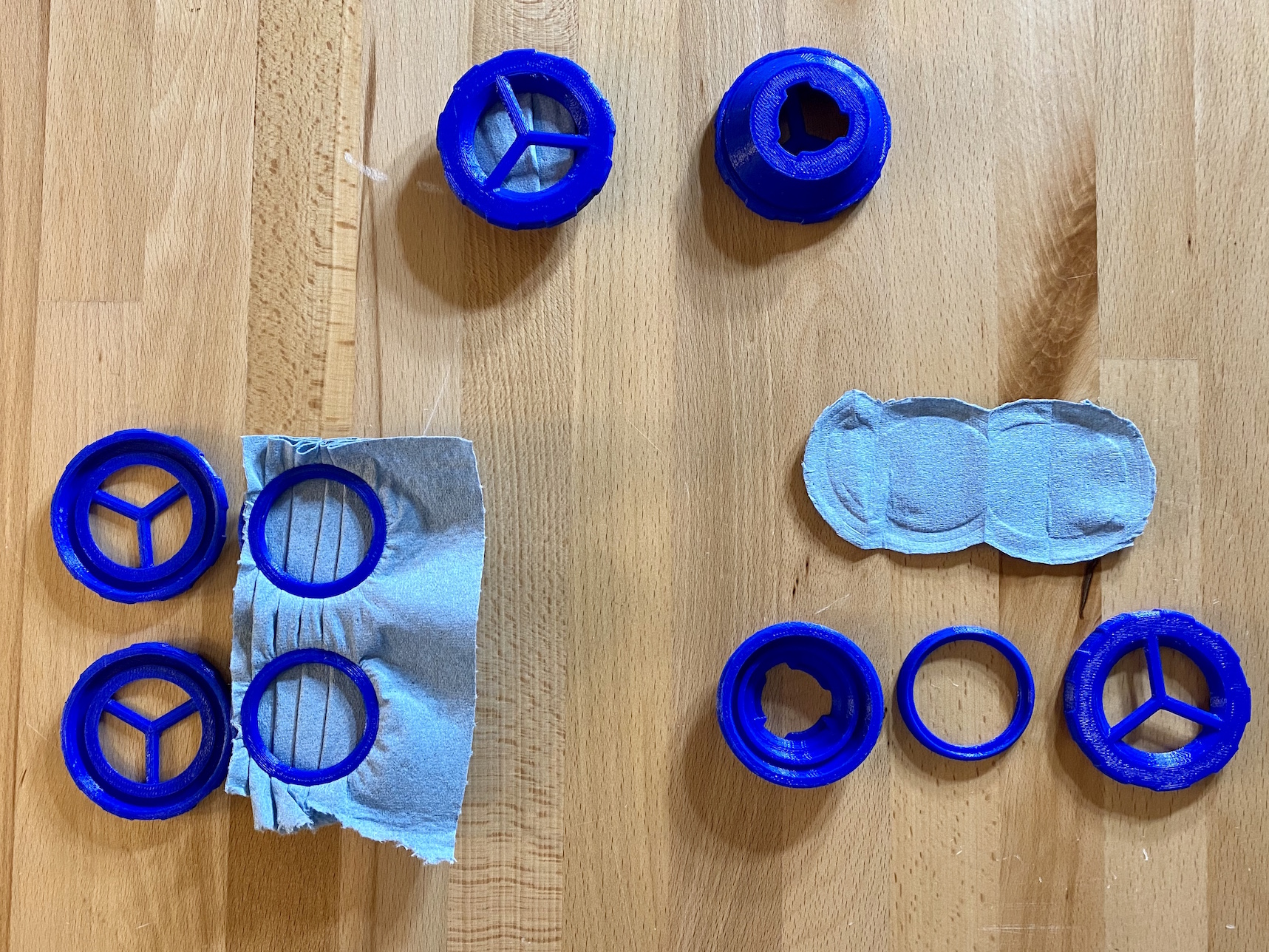
Pic 1: Views of Cartridges
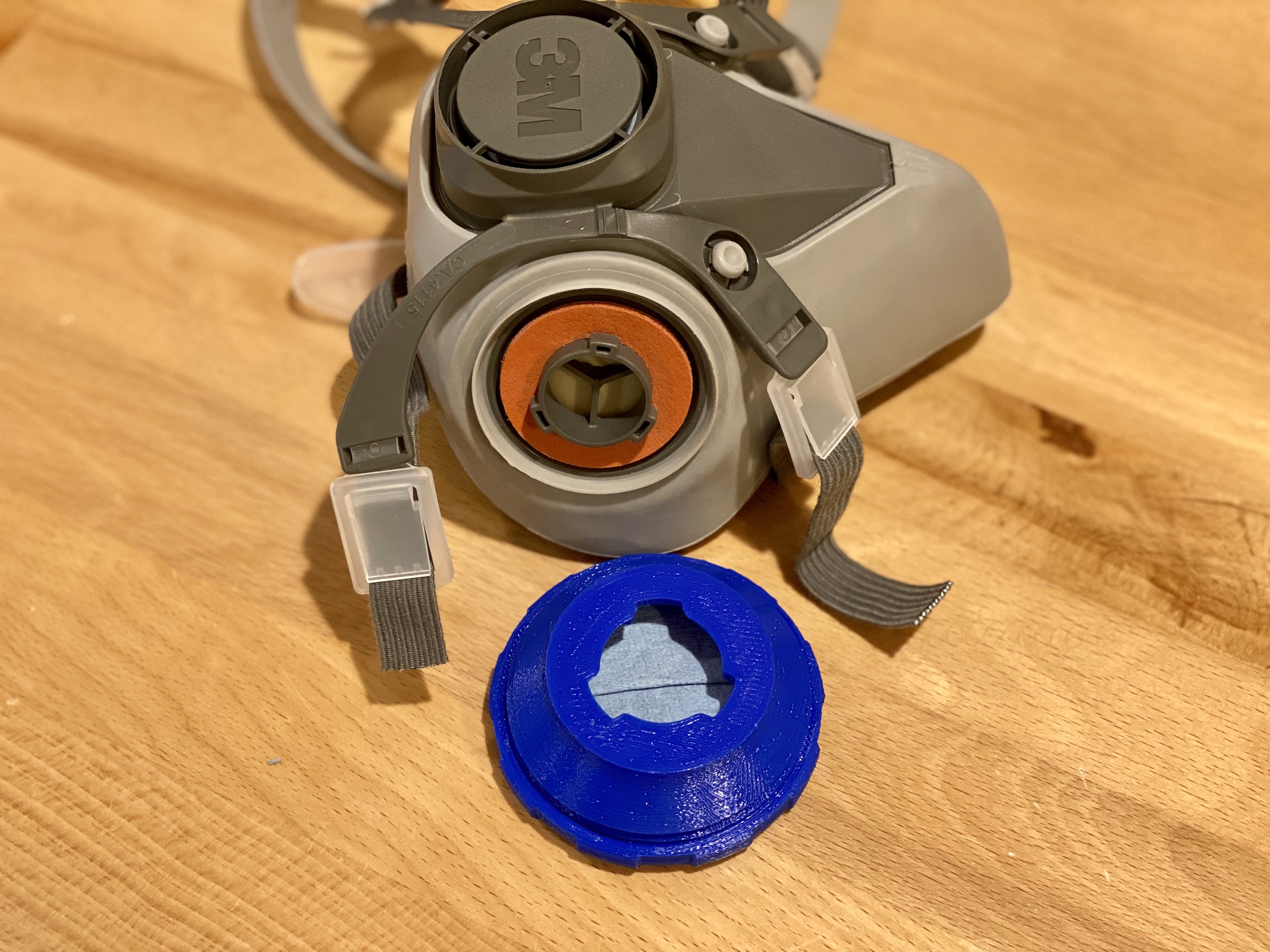
Pic 2: Cartridge and Mask
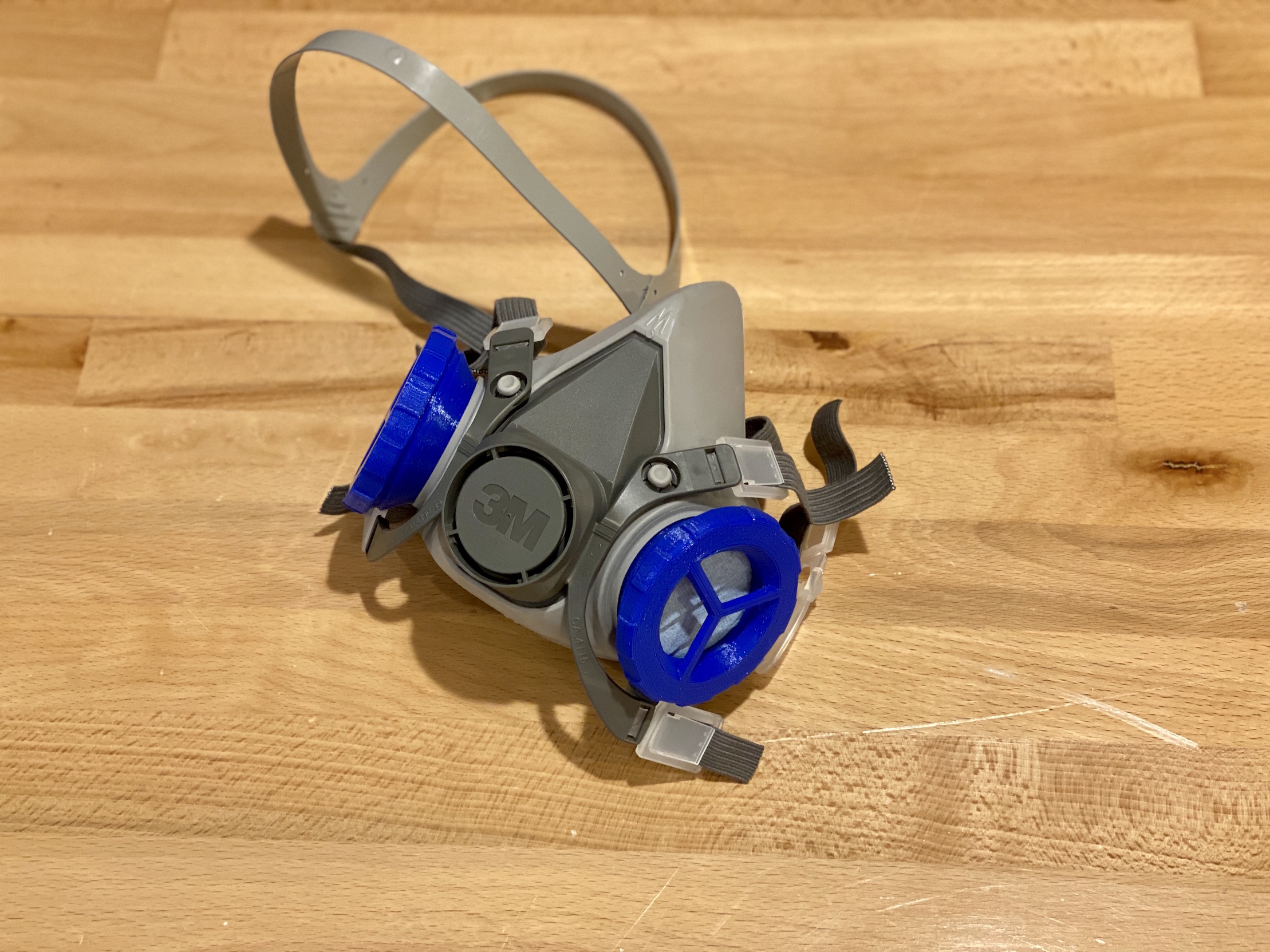
Pic 3: Cartridges Installed
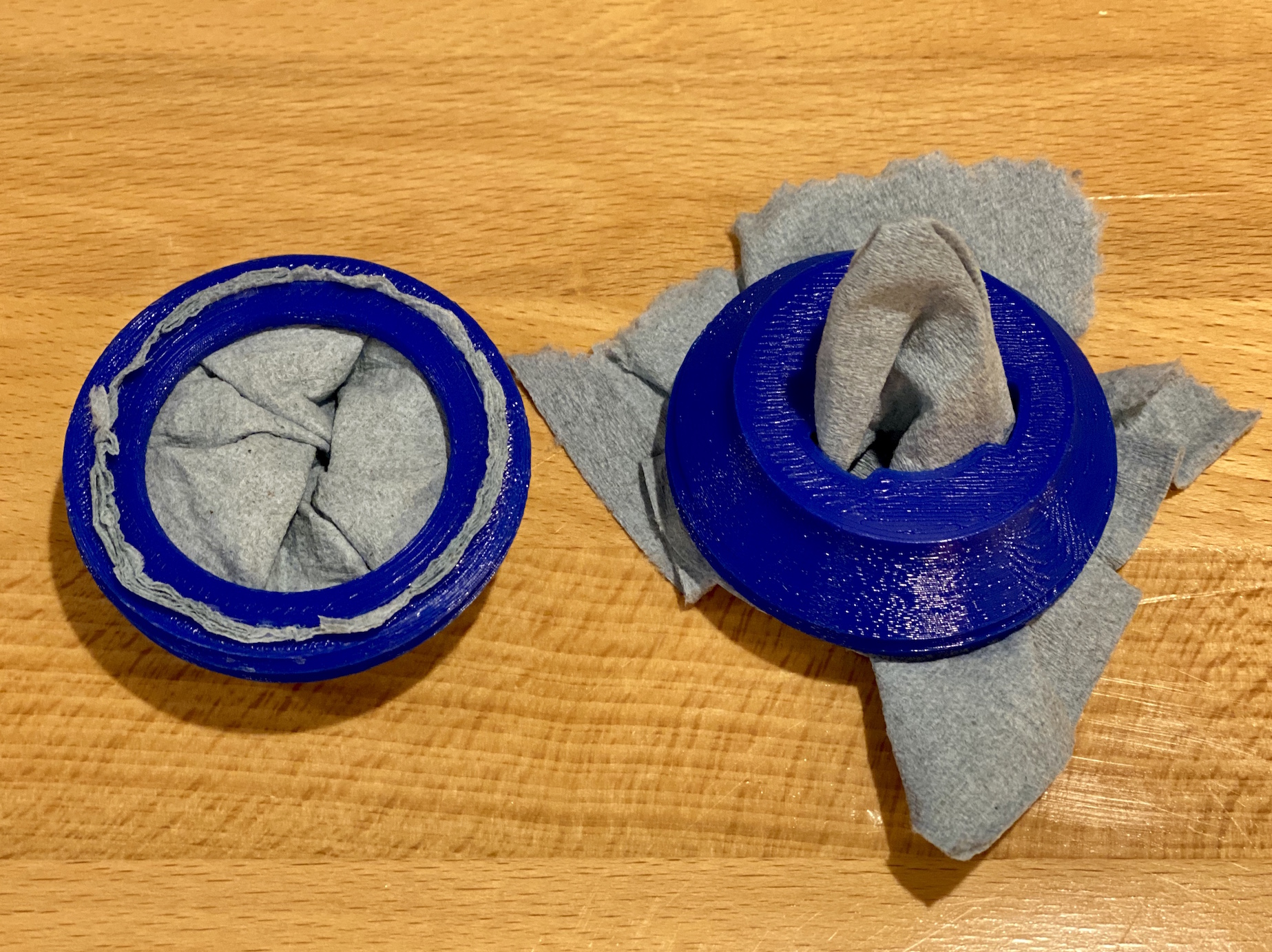
Pic 4: Best Filter Install
Additionally, I fit-tested these with indirect ventilation Dewalt brand goggles, and they are compatible with the 3M half facepiece respirator masks. Indirectly vented eye protection is desirable because coronavirus is transmissible via the eyes, and it's carried in aerosolized droplets--which is technically different from airborne transmission WHO, but still means it can be transmitted via the air. (According to a report in the CDC's Emerging Infectious Diseases journal, "the SARS-CoV-2 aerosol distribution characteristics in the GW indicate that the transmission distance of SARS-CoV-2 might be 4m [13 feet]" (CDC)" So these are better than sunglasses or other eye coverings that leave the sides exposed.
Some Notes:
- According to the CDC, masks (such as this one, and N95 masks with valves on them) provide the same level of protection to the wearer as non-valved masks, but "respirators with exhalation valves should not be used in situations where [the desire is to protect the environment from the wearer]...because the exhalation valve allows unfiltered exhaled air to escape into the sterile field" (CDC). Thus, without a cloth cover over the exhale valve on this 3M respirator, the mask does not protect the public from the wearer as the CDC and government agencies recommend.
- High Efficiency Particulate Air (HEPA) filters are also designed to filter 99.97% of particulates .3 microns or larger (EPA), prompting some sources to recommend using HEPA paper or other products made from HEPA filter material like vacuum bags or home air filters. However, some HEPA materials may include fiberglass in the construction, raising concerns about the long-term effects of breathing through materials not designed for this use. Inhaling fiberglass shards on a regular basis certainly does not sound healthy. This has seemingly led some sellers like this one to proclaim in marketing materials that they do "NOT Contain Fiberglass, Glass Materials or Harmful Chemicals."
- Likewise, I have not found testing on the safety of breathing through shop towels. It is possible that they also introduce fibers into the respiratory tract, and therefore could cause long-term health problems. Other filter materials could be used in this mask though, such as two layers of cotton t-shirt. This would still provide droplet protection, but not as much protection as the shop towels (if the anecdotal lab tests linked above are correct).
Please email me with any questions about this project and I'll try to answer them!
Back to the ToTheWoods.net Homepage
